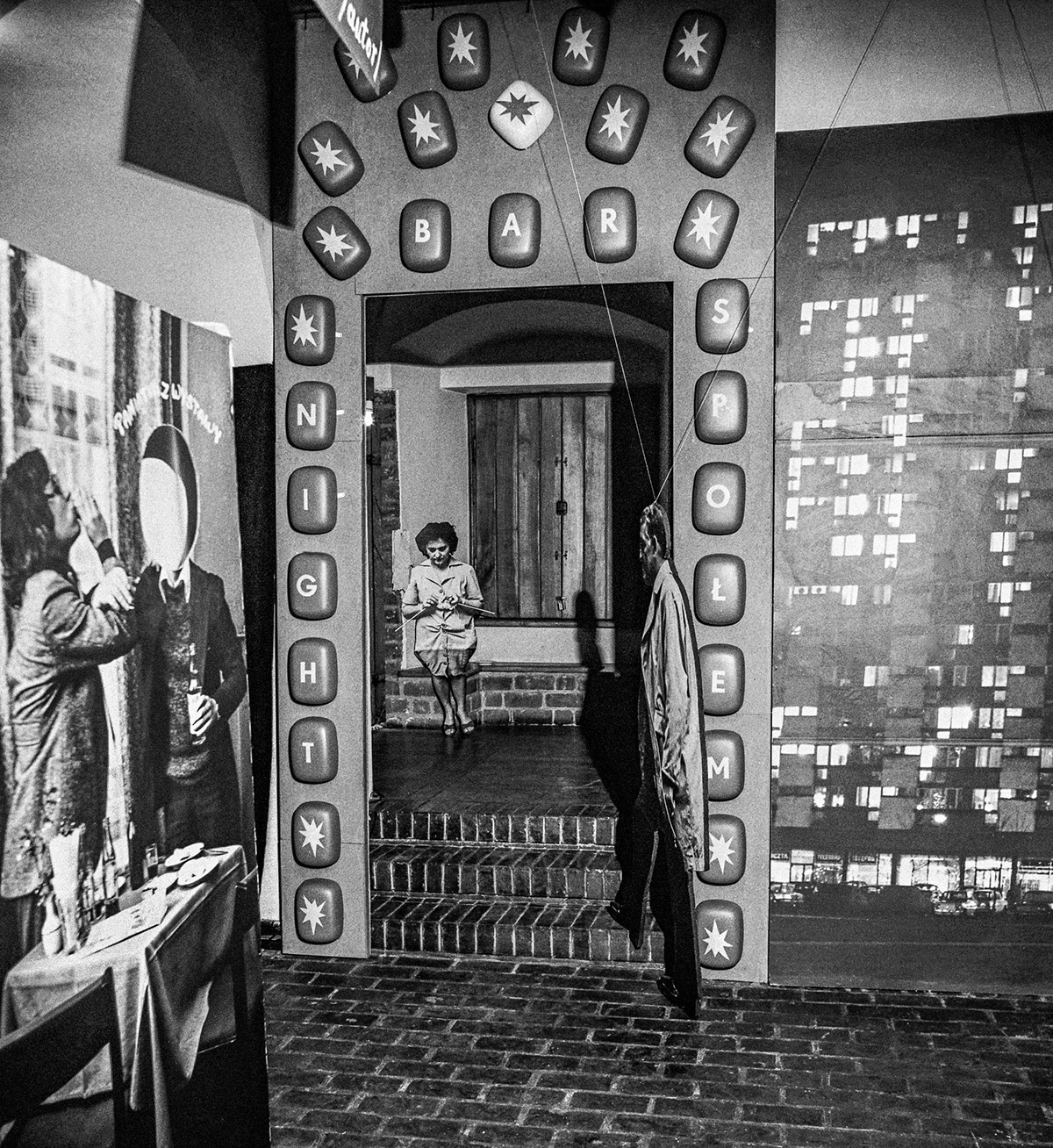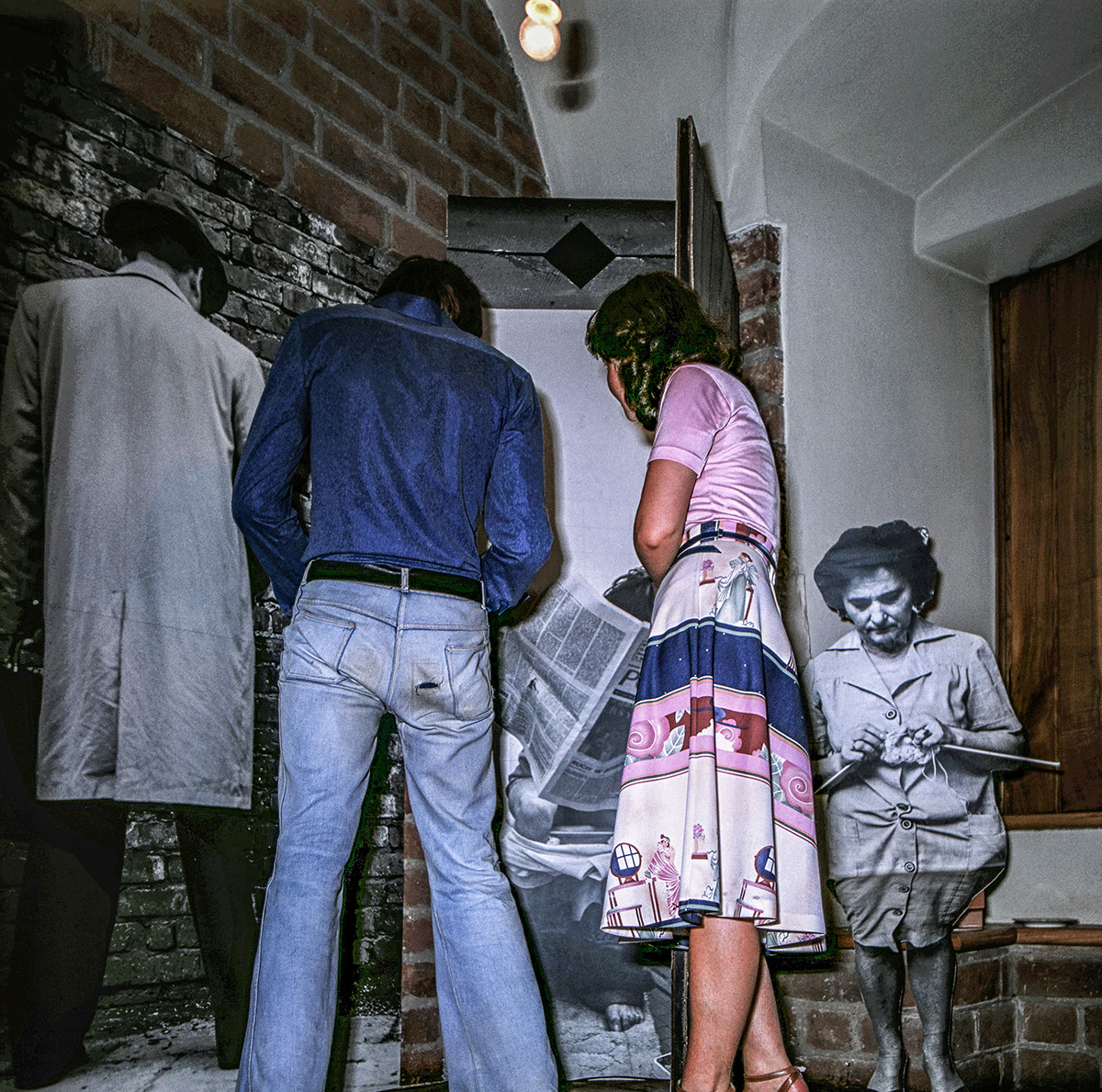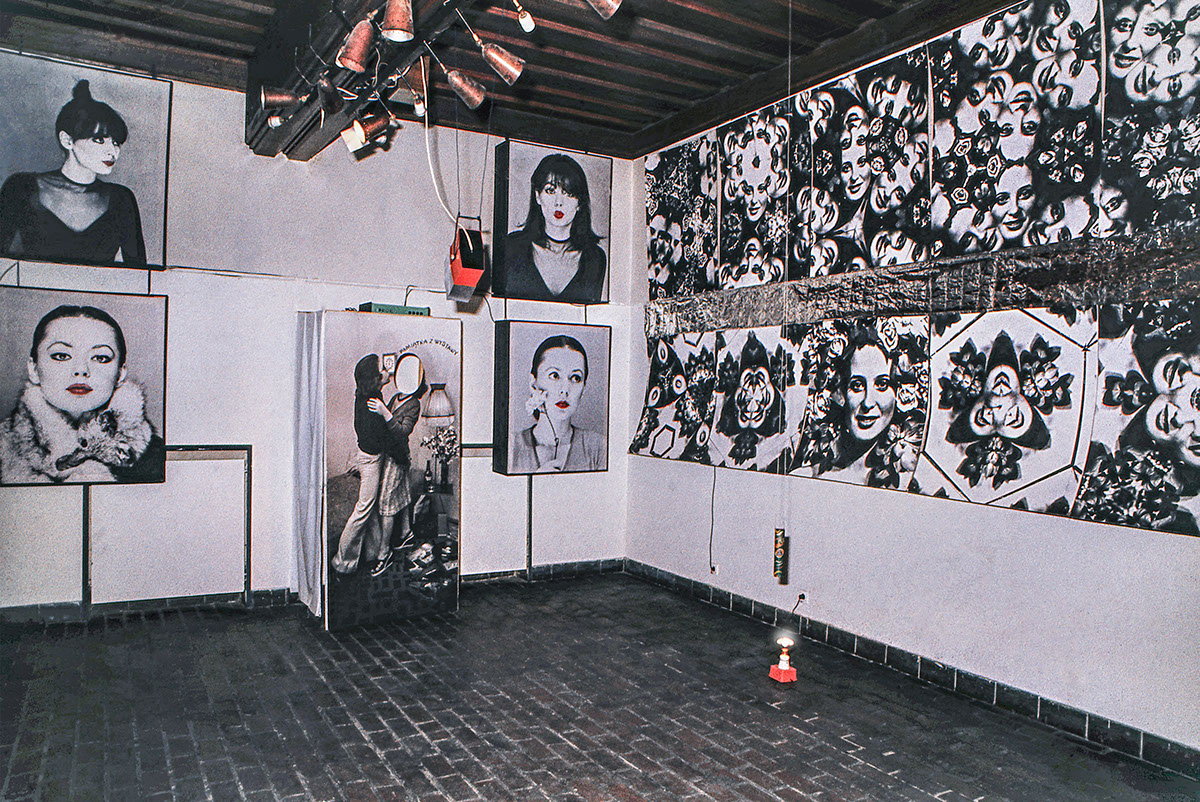























































A Conversation ...
JERZY BUSZA: I don"t see any other possibility. Now we have to talk calmly. Let"s start in a stereotyped way, who are you?
WOODY W. OCHNIO: I am a photographer here in the gallery and the author of the idea of this exhibition.
J. B.: Why have you done it, what do you mean by it, what do you want to achieve?
W. O.: I want people to benefit from this exhibition as entertainment, as a game. And as far as it"s possible I would like to give them a pretext for a moment"s reflection on maybe the more general of the problems of the philosophy of life in the second half of the twentieth century.
J. B.: But art is determined by the way the recipient sees it. It is the way it is received ...
W. O.: I know, everyone feels a spectator in a gallery often a recipient in the full sense of the word. Here the spectator takes part in a special kind of game, in which my exhibition is the score. Everyone will take something else away for himself from this exhibition, values, or a moral or little apart from the fact of perception of the space, which has been arranged by me. For everyone has differing motivations, for the decisions, which underlie choices.
J. B.: Your exhibition is a special kind of exhibition. It is within that stream of contemporary art, which is often defined as "aleatoro-ludic art". Its characteristic feature apart from the rule of the game mentioned by you, is a comprehension of the creative process as an artistic act by the creator and para-artistic by the recipient. This art is an open arrangement unsaid to the end where an important element is not the defined form but more the accident and the adventure, which it is difficult to foresee intellectually. In art you have quite a number of precursors, artists who started out from fairly analagous assumptions. The »ZOOM« and »FORMAT« groups not to mention some of T. Kantor"s activities or J. Grotowski"s theatre.
W. O.:. I haven"t looked into these things very: closely, art theory interests me least of all, which doesn"t mean that l rely entirely on feeling or intuition. I am well aware of manifestations of this kind by foreign artists, but unlike them I am interested in the relations, which are introduced into " the problems of the exhibition by the specific photographic substance.
J. B.: Is the reality which you have arranged a metaphoric, of course, reflection of the real world or is it rather a symbol?
W. O.: Whether you like it or not our culture is symbolic. A metaphor is simply a figure of speech an artistic way of formulating meanings. For me the exhibition is more of a symbol of a certain way of thinking, a certain mentality a certain social consciousness.
J. B.: Well, certainly. By your exhibition you compromise something, question something, not without quite a large dose of irony I feel.
W. O.: As far as the irony is concerned that"s an exaggeration, but I do draw attention to the stereotypes in our life which we can"t reject because it is they which are the content and the sense of life. I merely reveal them a little manifest them.
J. B.: The social aspect dominates this proposition.
W. O.: Maybe, but I tend to feel that everything can be art. The artist decides what is art, after a11 it"s entirely a question of agreement:
The recipient is confronted by a fait accompli, he can choose. He can see a film, read, listen, all to the same extent, as he exists in this exhibition.
J. B.: You propose joy, games to the recipients, and at the same time you arrange a small bourgeois room, an altar of everyday TV rites, the surrealism of uniform housing within which we nostalgically struggle to preserve our independent personality, alongside you show the anguish of the »nigh t bar«, the blinding neon, stairs, you allow people to delude themselves as they put a striking portrait into the kaleidoscope, they can have their photo taken with you, al though that"s a disgrace, they can go to the WC to discover that it is closed for an engaged eternity ... This artistic reality , like any reality which isn"t in line with everyday ideas - amuses us. But on the other hand it has its tragic aspect. It is a heightening of spectacular nonsense, which, when we begin to understand them seriously we will begin to feel them as a certain "pain of existence".
W. O.: Yes I agree. That is one of the possible interpretations. Yours. I do not think that anyone should want to identify with the world, which is shown here. That gets in the way of the games. Those who manage it will be satisfied they will find themselves on the pedestal of the monument.
J. B.: You know people"s weak points wel1, their pride and their vanity.
W. O.: I"m a photographer don"t forget. Art is a parallel sphere of activity. Up till now I have avoided exhibitions. I preferred to test the photographs in this way, their failings. can"t be hidden. I make up for it by the technique of shaping space. And I dream of the situation impossible as it were, about a spatial mobile photograph. I also take advertising photographs, mainly for CZSS "Społem". And I don"t lie when I say that photography is everything to me. It"s not only a profession, even when I don"t take photographs. Because, a photograph is a certain way of thinking of evaluation. A photographer exists in the audio-visual world with all which that entails. Where, as you are, firmly within the tradition of verbal culture.
J. B.: What you"re saying is convincing and the exhibition is a trace of this, I would say that it is an aggressive trace, aimed at the spectator.
W. O.: Right, because I want to mobilize people"s sensibility, spontaneity, imagination. I don"t want to make anything difficult, to complicate the way it"s seen. Everything"s clear and simple, done in such a way that the viewer can see the exhibition quickly. People"s time and effort has to be respected. Even more the spectator can take a snapshot of himself, the same as the ones he goes to Bulgaria or to Italy "to take of himself”.
J. B.: When it comes down to it what kind of photograph, do you like, what is your taste?
W. O.: You"ll be surprised but I like war photography, from Viet nam and Korea most of all. That was the greatest achievement of real professionals. My taste Salvador Dali. The name says it all.
J. B.: I"m beginning to understand. But, these remote associations Surrealism?
W. O.: Of course, the associations are remote and don"t have any raison d"etre in the sphere of form, that"t obvious.
J. B.: Now I think your exhibit ion is a great undertaking.
W. O.: I designed it and took most of the photographs. The rest is the work of my friends, photographers whose work I quote, the e1ectrician, mechanic, artists, designers. lt"s also worth mentioning the help of the Central Union of Consumer Cooperatives "Spolem".
J. B.: Our conversation is going well. Let"s talk man to man then,
privately.
W. O.: AlI art has its regions, which don"t like revealed interpreted, aloud publicly, well listen ...
This interview was made in the may of 1978 and published in exposition booklet.
Mr. Jerzy Busza was well known and very respectfull photographic-art critic.
********************************************************************************************************************************
Expo-Vision is my third one man show.
This time I wanted to show our world in capsule.
When you look thoroughly exhibitions works, you discover many of usually situations from ours lives, like; shows, selfies, toilets, drink night bar, ordinary people flat, disco or kaleidoscope effects, monument with variable known persons and mirror, where you see yourself as well on the monument.
Exposition was illustrated with music, which control the lights behind of pictures beautiful girls.


